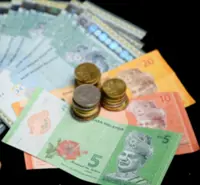
KUALA LUMPUR: Bank Negara has opted to keep the overnight policy rate (OPR) at 3% in contrast with several of its regional peers.
The central bank said the current monetary policy stance remained supportive of the economy and consistent with the current assessment of inflation and growth prospects.
The Bank of Thailand, Bank Indonesia and the Reserve Bank of Australia had cut their benchmark interest rates by 25 basis points in their February meetings.
In a statement yesterday, Bank Negara said the latest indicators pointed towards continued economic growth supported by resilient domestic demand and global trade.
Despite external uncertainties, it said the strength in the country’s economic activity is expected to be sustained in 2025, anchored by domestic demand.
“Employment and wage growth, as well as policy measures including the upward revision of the minimum wage and civil servant salary adjustment, would support household spending.
“The robust expansion in investment activity will be sustained by the progress of multi-year projects in both the private and public sectors, continued high realisation of approved investments, as well as the ongoing implementation of catalytic initiatives under the national master plans,” it said.
Amid global economic uncertainties, Bank Negara anticipated export growth to moderate and supported by the global tech upcycle, continued expansion in non-electrical and electronics, as well as higher tourist spending.
The global economy is likely to be sustained by positive labour market conditions, moderating inflation and less restrictive monetary policy, it added.
Economists welcomed the stability and balance that the current OPR would bring to the economy.
Chief executive at the Centre for Market Education Carmelo Ferlito said raising the OPR would be ineffective in fighting inflation.
Conversely, citing the example of Japan and the European Union, he said low interest rates would not automatically generate growth, emphasising that the main drivers for expansion include profit expectations.
“We do not see Bank Negara moving away from 3% soon unless there are breakouts of major incidents such as an economic crisis in China or a war in Europe,” he told StarBiz.
Bank Muamalat Malaysia Bhd chief economist Mohd Afzanizam Abdul Rashid said Bank Negara had turned dovish in its inflation assessment.
While the impact of policy adjustments including fuel subsidy rationalisation could potentially exert upward pressure on prices, there is currently an elevated downside to growth.
“This would keep the inflation fairly contained this year. Hence, keeping the OPR steady is probably the best course of action now,” said Afzanizam.
Moving forward, since the OPR decision is data-driven based on current gross domestic product (GDP) growth and inflation expectations, professor of economics at Sunway University Yeah Kim Leng said Bank Negara is expected to keep the OPR unchanged for the rest of 2025.
He said the central bank would have taken note of upside risks and developments such as the global tech cycle and strong domestic investments that could move the needle up should demand and price pressures pick up strongly.
“On the other hand, downside risks such as trade wars and geopolitical developments that could disrupt global trade and slow down Malaysia’s exports and economic growth, could trigger an easing,” he said.
Economist and research assistant at Ideas Malaysia Doris Liew said the OPR might be reassessed if there are significant economic volatility, heightened inflationary pressures or adverse external global dynamics.
She said Bank Negara’s future decisions regarding the OPR would hinge on the US Federal Reserve, as any further interest rate adjustments by the American central bank could have a ripple effect on Malaysia’s economic outlook.
“Should US protectionist policies slow global growth and dampen the domestic growth momentum, Bank Negara may consider a rate cut to support economic activity. However, the current economic development and foreign direct investment inflows remain strong, catalysed by the establishment of the Johor-Singapore Special Economic Zone,” she pointed out.
Economist Geoffrey Williams is of the view that while external headwinds had eased, uncertainties around US trade tariffs are raising risks.
Nonetheless, there is significant domestic support in Malaysia to withstand the challenges.
Executive director at the Socio-Economic Research Centre and economist Lee Heng Guie expected Bank Negara to hold on to the OPR for now.
“With the heightened external uncertainties weighing on growth outlook, Bank Negara’s priority now is to sustain domestic demand by keeping an accommodative monetary policy,” he said.
Interestingly, Asean economist at HSBC Yun Liu observed that Bank Negara has bucked the rate-cutting trend adopted by several of its peers.
Amid growing tariff uncertainty, she said the reaction of many Asian central banks had increasingly tilted towards growth concerns.
“That said, Malaysia remains in a relatively better position than its peers, with a robust growth of 5.1% in 2024. However, tariff risks cannot be ignored, and in particular, US President Donald Trump’s proposal of 25% tariffs on semiconductors is likely to impact Malaysia’s tech industry.
“In spite of that, Malaysia’s well-diversified trade portfolio and trade surplus with the United States may mitigate some tariff risks,” said Liu.










































